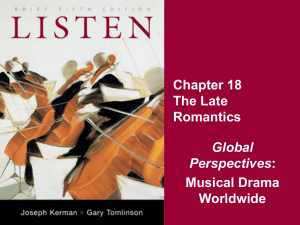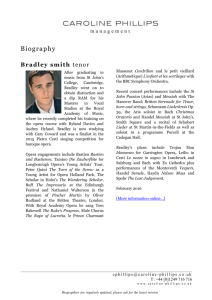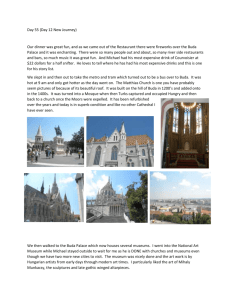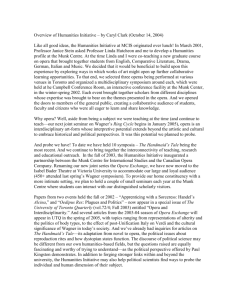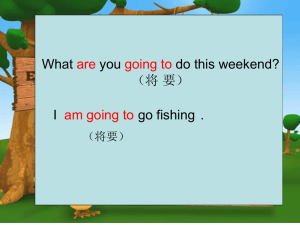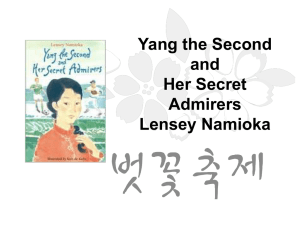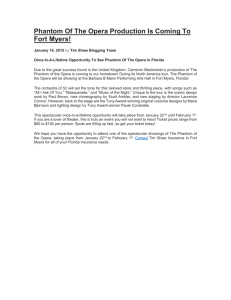Beijing Opera: A Short Guide
advertisement
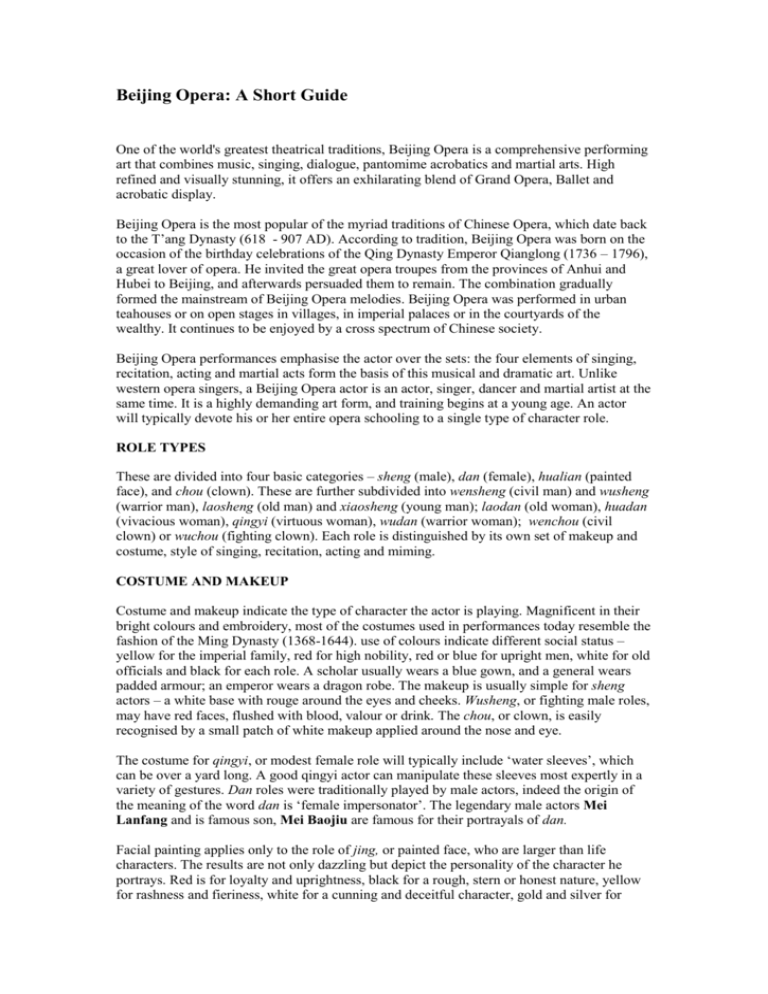
Beijing Opera: A Short Guide One of the world's greatest theatrical traditions, Beijing Opera is a comprehensive performing art that combines music, singing, dialogue, pantomime acrobatics and martial arts. High refined and visually stunning, it offers an exhilarating blend of Grand Opera, Ballet and acrobatic display. Beijing Opera is the most popular of the myriad traditions of Chinese Opera, which date back to the T’ang Dynasty (618 - 907 AD). According to tradition, Beijing Opera was born on the occasion of the birthday celebrations of the Qing Dynasty Emperor Qianglong (1736 – 1796), a great lover of opera. He invited the great opera troupes from the provinces of Anhui and Hubei to Beijing, and afterwards persuaded them to remain. The combination gradually formed the mainstream of Beijing Opera melodies. Beijing Opera was performed in urban teahouses or on open stages in villages, in imperial palaces or in the courtyards of the wealthy. It continues to be enjoyed by a cross spectrum of Chinese society. Beijing Opera performances emphasise the actor over the sets: the four elements of singing, recitation, acting and martial acts form the basis of this musical and dramatic art. Unlike western opera singers, a Beijing Opera actor is an actor, singer, dancer and martial artist at the same time. It is a highly demanding art form, and training begins at a young age. An actor will typically devote his or her entire opera schooling to a single type of character role. ROLE TYPES These are divided into four basic categories – sheng (male), dan (female), hualian (painted face), and chou (clown). These are further subdivided into wensheng (civil man) and wusheng (warrior man), laosheng (old man) and xiaosheng (young man); laodan (old woman), huadan (vivacious woman), qingyi (virtuous woman), wudan (warrior woman); wenchou (civil clown) or wuchou (fighting clown). Each role is distinguished by its own set of makeup and costume, style of singing, recitation, acting and miming. COSTUME AND MAKEUP Costume and makeup indicate the type of character the actor is playing. Magnificent in their bright colours and embroidery, most of the costumes used in performances today resemble the fashion of the Ming Dynasty (1368-1644). use of colours indicate different social status – yellow for the imperial family, red for high nobility, red or blue for upright men, white for old officials and black for each role. A scholar usually wears a blue gown, and a general wears padded armour; an emperor wears a dragon robe. The makeup is usually simple for sheng actors – a white base with rouge around the eyes and cheeks. Wusheng, or fighting male roles, may have red faces, flushed with blood, valour or drink. The chou, or clown, is easily recognised by a small patch of white makeup applied around the nose and eye. The costume for qingyi, or modest female role will typically include ‘water sleeves’, which can be over a yard long. A good qingyi actor can manipulate these sleeves most expertly in a variety of gestures. Dan roles were traditionally played by male actors, indeed the origin of the meaning of the word dan is ‘female impersonator’. The legendary male actors Mei Lanfang and is famous son, Mei Baojiu are famous for their portrayals of dan. Facial painting applies only to the role of jing, or painted face, who are larger than life characters. The results are not only dazzling but depict the personality of the character he portrays. Red is for loyalty and uprightness, black for a rough, stern or honest nature, yellow for rashness and fieriness, white for a cunning and deceitful character, gold and silver for gods and demons. Many painted faces mix a variety of colours, illustrating a more complex character. There are over one thousand painted facial patterns are used. MUSIC In Beijing Opera the lyrics are set to the metre, with the music designed to fit their rhythmic requirements. The basic melodies are Erhuang and Xipi. The former is more sedate, appropriate to serious circumstances, and the latter is quicker and more vivacious, suitable for more light-hearted occasions. The rhythm of both melodies is based on simple time – two or four beats to the bar. Beijing Opera performances are accompanied by an ensemble of traditional Chinese instruments. The ensemble normally sits on the side of the stage, rather than in an orchestral pit. The two-stringed fiddles jinghu and erhu are two of the main instruments. Other instruments include sheng (reed pipes), yueqin (moonshaped mandolin, pipa (the Chinese lute) and suona (the Chinese clarinet). The prominent rhythms of the operas are drummed out on danpi (drum) and ban (clapper) – other percussive instruments include lo (gongs) and nao (cymbals). MOVEMENT AND GESTURES Entrance and exit: Beijing Opera traditionally opens with an empty stage to an orchestral selection, before the actors make their appearance. An actor, on making his exit, is required to sing and declaim his last word to the audience before he turns to leave the stage to musical accompaniment. Walking: The style of walking in Beijing Opera is highly stylized according to the category of role that an actor takes. Hualian, or painted face characters, tend to strut, taking large and very deliberate steps. Wensheng, scholarly or dignified men walk with a leisurely gait. Dan, or female characters, walk in short, mincing steps, with huadan, or vivacious females, walking with more sway than qingyi , or virtuous females. Miming: Mime is central to the action in Beijing Opera. In an extended mime scene in At the Crossroads, the martial characters move in such a way as to suggest that each cannot see the other, although the stage is fully lit. Below is a short list of the stylized gestures and their meaning: Entering a doorway - lifting one foot after the other Worry - moving the hand about and contracting the forehead. Waving a horsewhip – riding a horse Acrobatics: Battle scenes in Beijing Opera invariably involves spectacular gymnastics and acrobatics. It usually consist of somersaulting, doing a series of cartwheels very quickly, throwing spears and swords with speed and accuracy. A high point is the double spear toss in which a general, usually a woman, kicks two spears at once in opposite directions, one with each foot. There is an extended scene of spear tossing by the leading actress Li Shengsu in Legend of the White Snake. Dance: The school of dancing of the legendary dan actor Mei Lanfang has become popular and widespread. His method of dancing is patterned after the ancient canons of terpsichorean art, said to be over one thousand years old.
